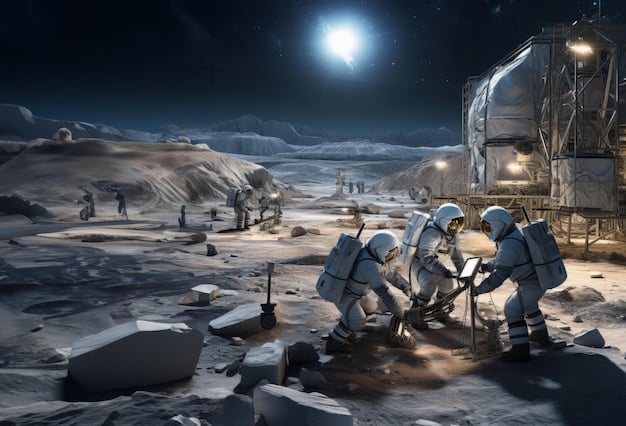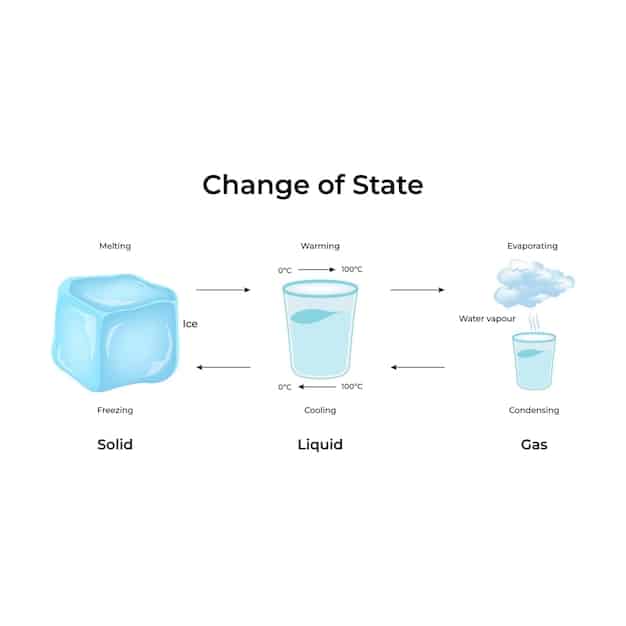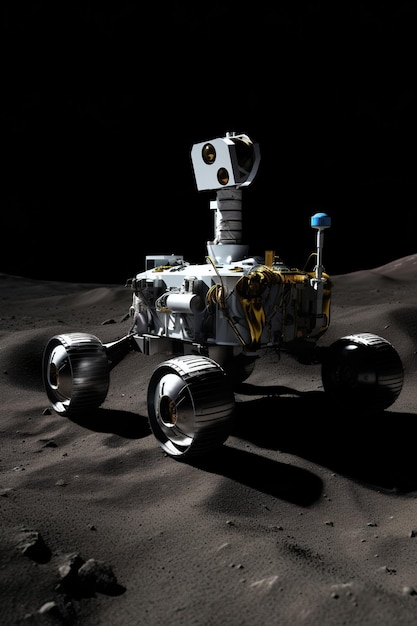Lunar Habitats by 2030: NASA’s Top 3 Development Challenges

What are the 3 biggest challenges facing the development of sustainable lunar habitats by 2030, according to recent NASA reports? They primarily involve overcoming technological hurdles in resource utilization and radiation shielding, while also establishing efficient, reliable methods for construction and maintenance in the harsh lunar environment.
The dream of establishing a permanent human presence on the Moon is becoming increasingly tangible, fueled by ambitious programs like NASA’s Artemis. However, realizing this vision by 2030 requires overcoming significant obstacles. What are the 3 biggest challenges facing the development of sustainable lunar habitats by 2030, according to recent NASA reports? Let’s delve into the critical hurdles that engineers and scientists are diligently working to address.
These challenges range from ensuring astronaut safety against extreme conditions to efficiently utilizing lunar resources for self-sufficiency. Understanding these issues is crucial to appreciating the complexity of establishing a long-term lunar base.
What Are the 3 Biggest Challenges Facing the Development of Sustainable Lunar Habitats by 2030?
Establishing sustainable lunar habitats by 2030 is an ambitious goal that NASA and its partners are actively pursuing. However, several major challenges stand in the way. According to recent NASA reports, three of the most significant hurdles involve resource utilization, radiation protection, and construction logistics. Addressing these challenges effectively is critical for creating a viable and enduring lunar presence.
The Importance of In-Situ Resource Utilization (ISRU)
One of the major challenges facing the development of sustainable lunar habitats is the need to utilize lunar resources effectively. This approach, known as In-Situ Resource Utilization (ISRU), could significantly reduce the reliance on Earth-based resupply missions. Harnessing the resources available on the Moon is crucial.
- Water Ice Extraction: Extracting and processing water ice from permanently shadowed regions near the lunar poles.
- Regolith Utilization: Developing technologies to use lunar regolith (soil) as a construction material.
- Oxygen Production: Creating systems to extract oxygen from lunar rocks and minerals for life support and propellant.
Overcoming these challenges will be important to create a self-sustaining lunar habitat. The ability to use resources already on the Moon will reduce the cost and risk associated with lunar missions. This makes it a priority for NASA and other space agencies involved in lunar exploration.

Radiation Shielding and Health Concerns
Protecting future lunar inhabitants from harmful radiation is paramount. Without Earth’s protective atmosphere and magnetic field, the Moon is exposed to high levels of cosmic and solar radiation. These pose significant health risks, including cancer and neurological damage. Developing effective radiation shielding is one of the key factors under consideration when asking, what are the 3 biggest challenges facing the development of sustainable lunar habitats by 2030, according to recent NASA reports?
Several strategies are being explored to mitigate this threat. These include:
- Habitat Placement: Building habitats underground or within lava tubes to provide natural shielding.
- Material Development: Using lunar regolith to create radiation-blocking barriers around habitats.
- Advanced Shielding Technologies: Developing advanced materials and technologies for radiation protection.
The goal is to reduce radiation exposure to levels deemed safe for long-duration lunar missions. This requires a multi-faceted approach that combines habitat design, material science, and advanced technologies for what NASA considers what are the 3 biggest challenges facing the development of sustainable lunar habitats by 2030, according to recent NASA reports?
Construction and Logistics Challenges
Constructing and maintaining lunar habitats present a unique set of logistical challenges. The Moon’s harsh environment, remote location, and limited infrastructure require innovative construction techniques and robust support systems. Addressing these challenges is essential for creating a permanent lunar base. What are the 3 biggest challenges facing the development of sustainable lunar habitats by 2030, according to recent NASA reports? NASA is actively exploring many ways to overcome these challenges.
3D Printing with Lunar Regolith
Using 3D printing would use lunar soil, also called regolith, to build habitats. This reduces the need to transport material from Earth, which costs a lot. The process could significantly reduce the risk associated with building on the lunar surface.
Autonomous Robotics and Construction
Deploying robots that can construct habitats and other infrastructure autonomously. These robots would be able to operate in the lunar environment, paving the way for a more human-centric lunar base.
- Robotic Excavation: Using robots to prepare the lunar surface for habitat construction.
- Automated Assembly: Deploying robots to assemble habitat components and infrastructure.
- Remote Monitoring: Establishing remote monitoring systems to oversee construction progress and identify potential issues.
Each of these approaches tackles different aspects of the construction and logistics challenges associated with the question of what are the 3 biggest challenges facing the development of sustainable lunar habitats by 2030, according to recent NASA reports?

Addressing Dust Mitigation
Lunar dust is extremely abrasive and can infiltrate equipment, posing a significant risk to machinery and astronaut health. Mitigating the effects of lunar dust is a crucial challenge for long-term lunar missions and when discussing, what are the 3 biggest challenges facing the development of sustainable lunar habitats by 2030, according to recent NASA reports?
- Dust-Resistant Materials: Developing materials and coatings that resist dust adhesion and abrasion.
- Habitat Design: Creating airlocks and dust filtration systems to minimize dust intrusion into habitats.
- Cleaning Procedures: Implementing effective dust removal procedures for spacesuits and equipment.
By addressing the challenge of lunar dust, NASA is working toward creating safer and more reliable lunar habitats. These improvements are essential for missions where individuals are deployed for an extended period of time.
Power Generation on the Moon
Reliable power is essential for lunar habitats. Solar power is a key consideration, especially during the lunar day. Planning for the lunar night is also very important. NASA’s reports indicate ensuring power generation sustainability is crucial to future missions. The topic of *What are the 3 biggest challenges facing the development of sustainable lunar habitats by 2030, according to recent NASA reports?* leads us to a crucial aspect of lunar development.
- Solar Arrays: Deploying large solar arrays to capture sunlight during the lunar day.
- Energy Storage: Developing energy storage systems to provide power during the lunar night.
- Nuclear Power: Exploring the use of small nuclear reactors as a reliable source of power.
NASA is studying the best long-term power solutions as a vital part of what are the 3 biggest challenges facing the development of sustainable lunar habitats by 2030, according to recent NASA reports? This will involve a careful balance of cost, reliability, and scalability.
Ensuring Psychological Well-being
The psychological health of astronauts during long-duration lunar missions is important. Isolation and confinement can be challenging, so maintaining mental well-being is crucial. Studying the psychological impact of long lunar deployments ties in closely to what are the 3 biggest challenges facing the development of sustainable lunar habitats by 2030, according to recent NASA reports?
- Habitat Design: Creating habitats that provide a sense of spaciousness, natural light, and privacy.
- Communication Systems: Establishing reliable communication links with Earth to maintain social connections.
- Recreational Activities: Providing opportunities for exercise, recreation, and personal expression.
A focus on improving the psychological wellbeing of the crew adds a layer of complexity to the question, *what are the 3 biggest challenges facing the development of sustainable lunar habitats by 2030, according to recent NASA reports?* The steps needed for astronaut health and morale are required for long-term sustainability.
| Key Point | Brief Description |
|---|---|
| 🧊 ISRU | Using lunar resources like water ice for sustainability. |
| 🛡️ Radiation Shielding | Protecting habitats from cosmic and solar radiation. |
| 🏗️ Construction Logistics | Developing lunar construction techniques and processes. |
| 🌑 Dust Mitigation | Reducing damage and inconvenience caused by lunar dust. |
FAQ
The main goals include establishing a permanent human presence on the Moon, conducting scientific research, and developing technologies for future space exploration. These support a sustainable and ongoing lunar base.
NASA intends to extract water ice for life support and propellant, use regolith for construction, and produce oxygen from lunar rocks. This decreases dependency on Earth and enhances self-sufficiency.
The biggest challenges involve habitat placement, material development and advanced technological developments. These combined improvements and innovations will protect astronauts from harmful radiation levels.
NASA is looking at solar arrays, energy storage systems, and nuclear power as potential solutions. Reliable power sources are a necessity for maintaining sustainable operations during future missions.
NASA is ensuring psychological well-being through thoughtful habitat design, strong communication systems, and engaging recreational activities. These measures are aimed at mitigating the effects of isolation and confinement.
Conclusion
Addressing what are the 3 biggest challenges facing the development of sustainable lunar habitats by 2030, according to recent NASA reports requires innovation across many different areas. From protecting against radiation to utilizing in-situ sources in creative ways, NASA and its partnerships are working toward these goals.
These efforts are essential for establishing a permanent lunar base and advancing space exploration. The solutions developed now will lay the foundation for human missions to Mars and beyond. Ensuring resources are in place will promote longevity.





